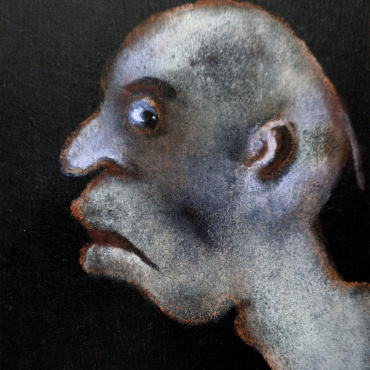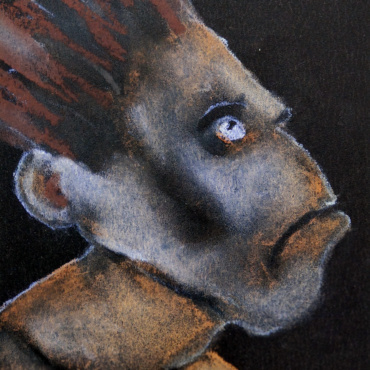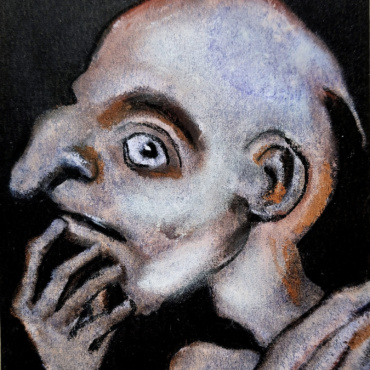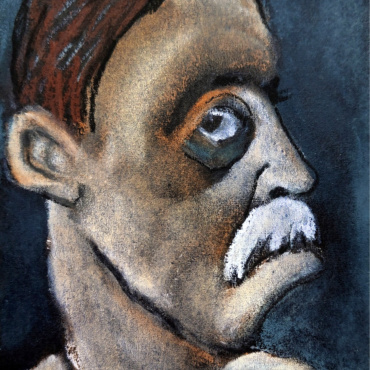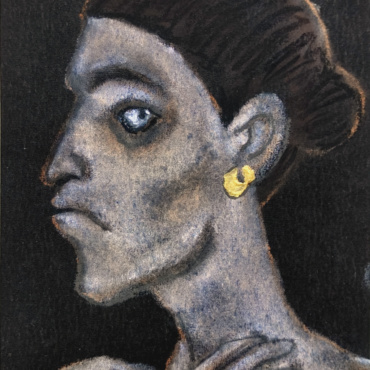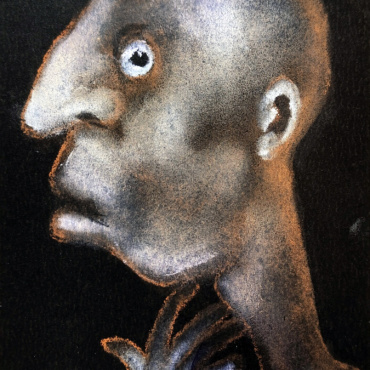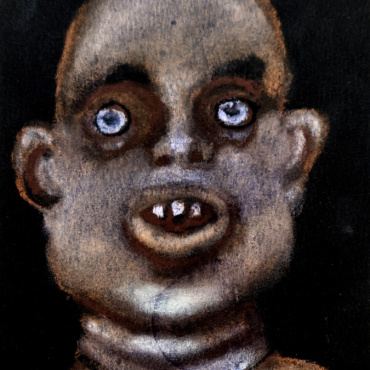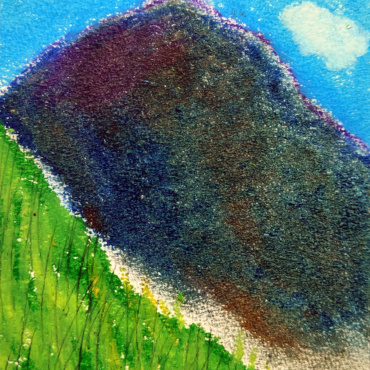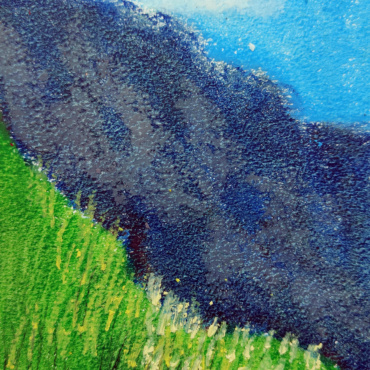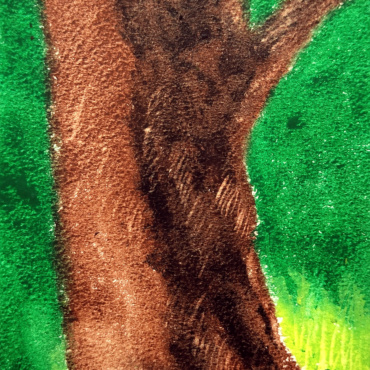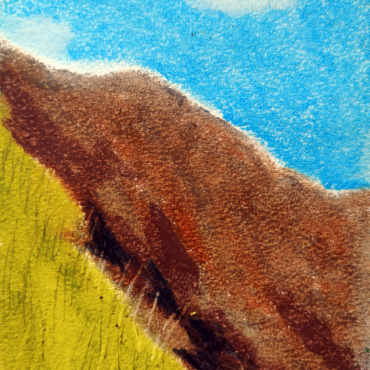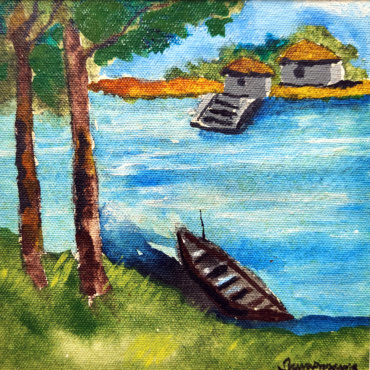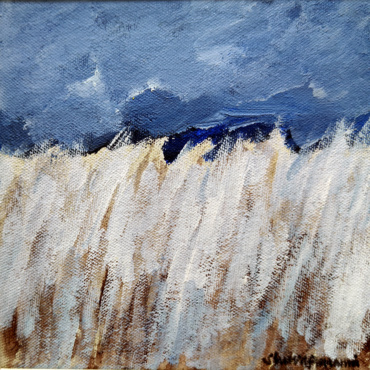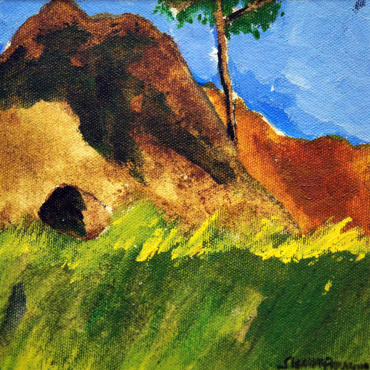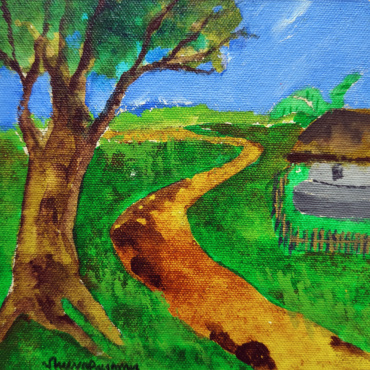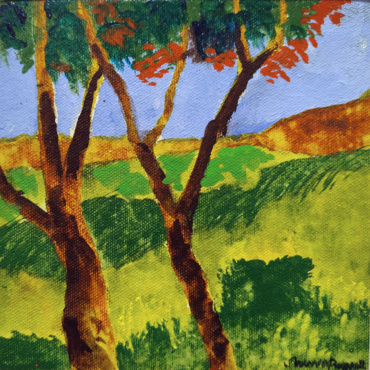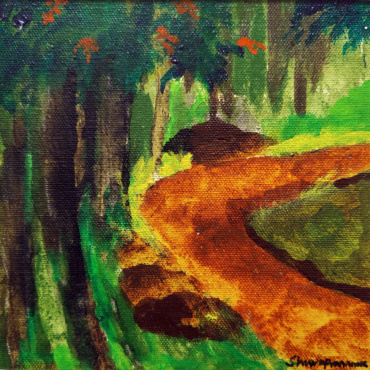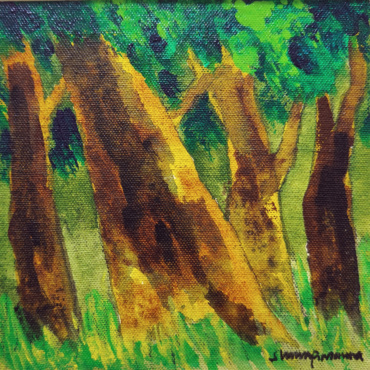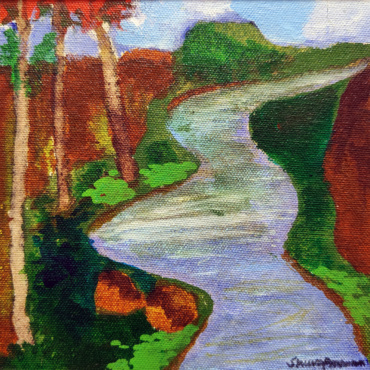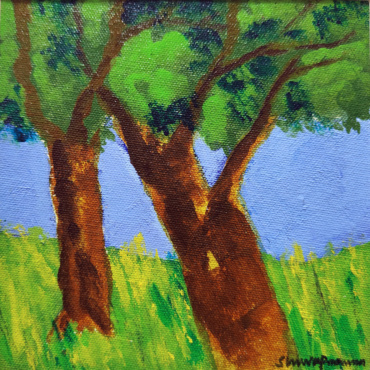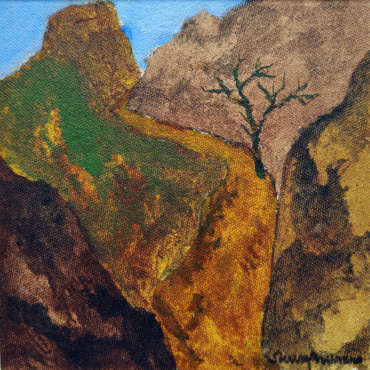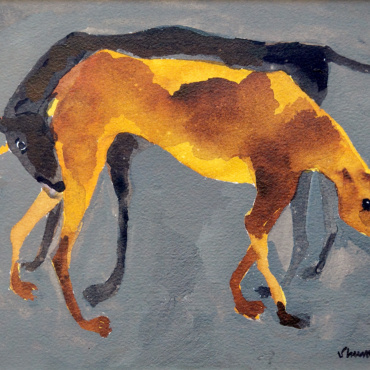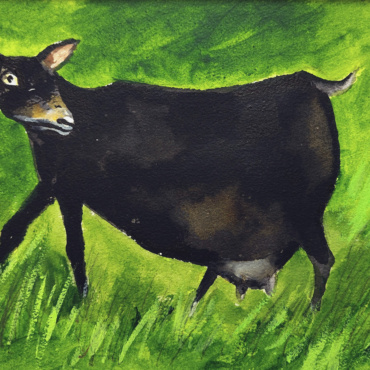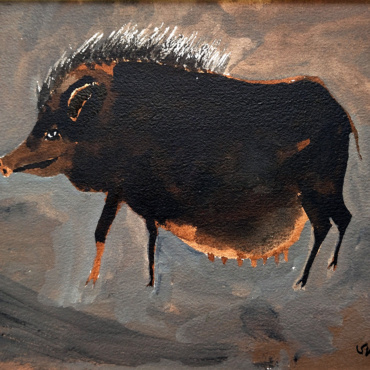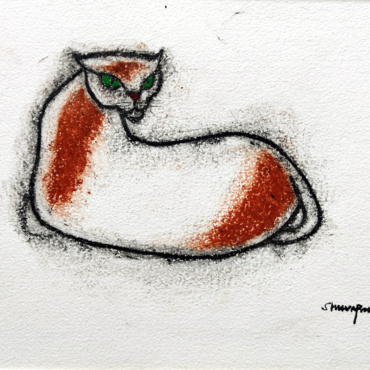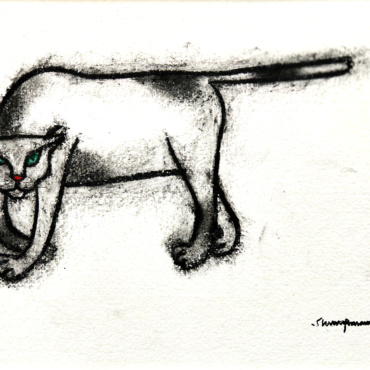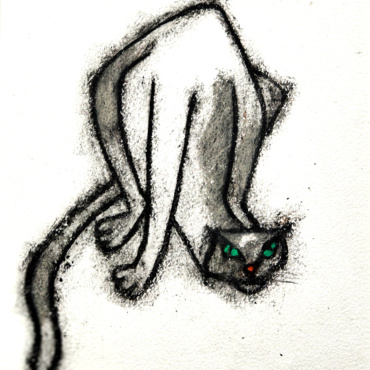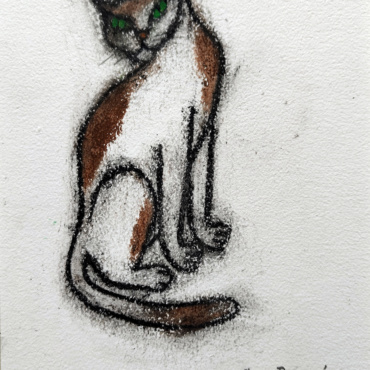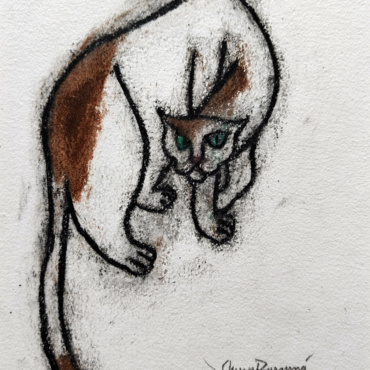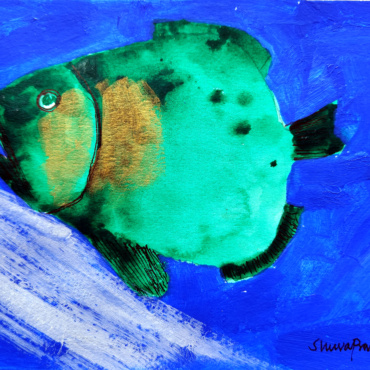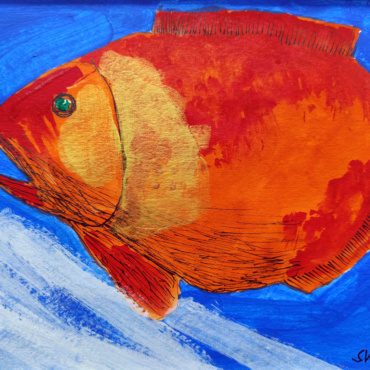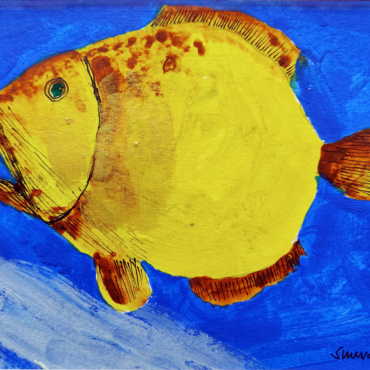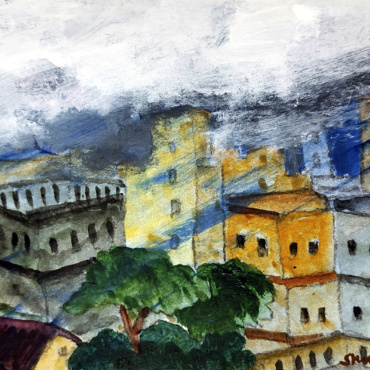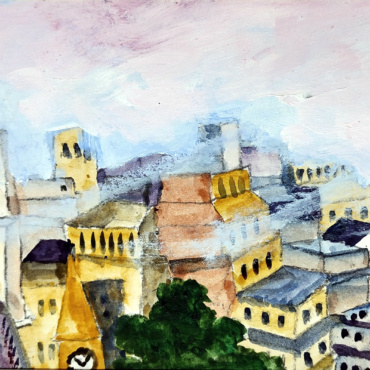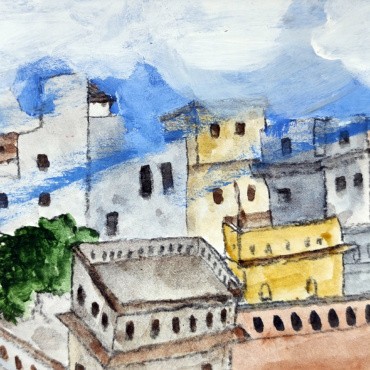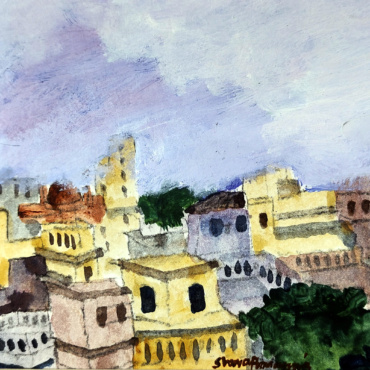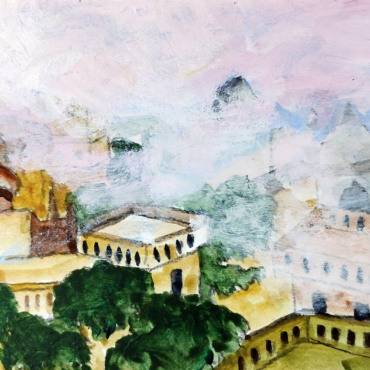Does an artist approaching the last lap of his creative course take a last languid backward glance, something only too natural for any sensitive mind? It is time for him to bring to light the pebbles he has picked up in the course of the rich experiences he has lived through over his journey. But will the pebbles he draws out from his traveller’s sling bag be all only gems? Won’t there be the inescapable share of stones and thorns? How can the artist miss the lone flower that slipped from the congratulatory bouquet he had once received and turned over the years into a discoloured petal? They are all part of a lifetime’s store, a pile of moments gathered, sometimes lovingly, sometimes apathetically. At times they conjure up the faces of dearly loved ones, scraps of memories, like an abandoned garland from the past, now in tatters. It is a time when memories of the good and the bad experienced in life lose their immediate intensity; all that enwraps one at the end of it all is an all-pervading sense of unblemished joy, with the good and the bad inextricably intermingled; with all the irrepressible angst, conceit and sense of hurt associated with youth gently fading into the cosy warmth of the afternoon of life. That is how life wends its way. How can the artist find it any different? One recalls those lines from Tagore: ‘When you draw your memories into a shape/ It marks your senses,/urging them to store them in language.’ For the artist the act is not to store them in language, but to bind them in lines and hues, loaded with deep emotion and warmth. That is how the present series of Shuvaprasanna’s works project themselves. They are not just works of art, but familiar memories churned up from a lived life, a few torn pages that have slipped out of a diary come unbound, only to be scattered about by a sudden gust of wind.
Those who have known Shuvaprasanna’s works over a long time have come to recognize the taut bind of shapes, the effervescent glow of colours and the dense circulation of dynamic lines at the core of his artistic idiom. At the same time the fervour of his self-articulation has a charge of its own that shakes up the viewer. A spirit of protest runs through his individual artistic sensibility and style, surfacing delicately at times, bursting out violently at other times in passionate outpourings; the passionate charge reverberating in the viewers’ souls. All these have been familiar territory for Shuvaprasanna’s viewers. In most cases the form of the human body has been Shuvaprasanna’s centre of gravity, with his skilful geometric exploration across the entire canvas giving the painting a dynamism that retains at the same time a still, unmoving centre. There are times when signs of the surreal cast a shadow over the interstices of the bodily dynamics. Flowers in a vase come to suggest the charm of the female body. But the present exhibition represents a distinctively different artistic idiom marking his shapes, technique and expression alike. His smaller works on display this time, formwise, if not in character, carry the flavour of a bunch of phantasmic miniatures. His paintings this time are not large canvases, but sudden flashes of light tearing out of small spaces. There are works in which the composition spreads over the entire space, with the colours, the lines and the shapes together, with all their allure, contributing to give the painting its solid, rich base. There are paintings that leave a lot of space empty, adding to the central theme a different dimension altogether–the scenario of utter emptiness of an endless stretch of white sandspace. The imagery bursts out all on a sudden from the centre of that rectangular space left blank, creating an intense pictoriality. The form that flashes into view does not float in cursorily, but registers its presence powerfully as it emerges out of the paper. The precipitous emergence of the image from out of an empty canvas carries evocations of the artistic ventures of the Far East. In Shuvaprasanna’s exhibition this time, his subjects range through phantasmic landscapes, cityscapes as they unroll in a bird’s eye view, faces, and the animal world around us. As I put it earlier, they are a scattering of torn pages, laid out with utter disdain for any deliberate, careful subject-driven organization!
There is a section in the exhibition dedicated to paintings of a whole lot of animals brought to life by the artist’s fluent stroke; with several cats, not the stray ones found roaming in the streets, but adored, well cared for, domesticated pets. These pampered, spoilt, dying to be cuddled creatures appear in full glory in many of Shuvaprasanna’s new works. Some of them are caught when turning around; or busy licking themselves clean; or with a food bowl; the one regally looking out. There is one stretching out with its spine askew. There are those with their bodily twists and eyeballs spelling distrustful alertness. There are some in the typical bi·dāl tapaswi (lit. ‘the mendicant cat’) stance familiar in the Bengali imagination as symbolic representation of the fraudster acting innocent. All these cats–all in milky white–share in their stance and motion alike a sharp presence of supreme self-confidence and dignity. Most of these works are in black and white, with rare touches of colour–a gentle smearing of dark brown or black or brownish-red earthen on their heads, backs, near their midriffs, or at their tail-ends–adding to their buoyancy. The lines in the works are left soft and light; the artist consciously bodying the cat forth with smoky lines. The rubbed out, far from transparent, smoky lines that define the feline images merge them into the body of the canvas; the artistry lying in what may be described as smudgy lines. The borders that define the bodily contours seem to draw the cats out of the canvas in a spontaneous dynamics.
Yet another bunch of works portrays fishes–a whole galaxy of colourful fishes. Fishes in golden yellow, in palāsh orange, and ocean green adorn the canvases against a bright blue background–the artist’s palette drawing its potency and radiance from the bright yellow, orange and green clashing with the deep blue. The artist’s distinctive style is evident in his rampant colourfulness and the confident strokes of his brush. There are markedly German Expressionist tones in the rich coloration of his two-dimensional exercises. All these trends and tendencies carry the impress of his intimate engagement with these modes recasting and redefining them in his characteristic geometric formalism underscoring his taut articulation. A group of paintings portraying a herd of four legged animals brings a different flavour to the display; with the all too familiar street dog in black and almond; the goat in dense black; the suddenly stalled donkey; the langur desperately looking for food; the chased pig; the striped tiger–all of them flushed with vibrancy, thanks to the dazzle of the colours, the mastery of technique and the sheer ease of the artist’s strokes.
Shuvaprasanna’s landscapes have a distinctiveness of their own. The bunch of landscapes, painted in oil, on small canvases, bear a wide spread of green. The nearly rectangular canvases portray glimpses of familiar villagescapes; a simple boat anchored at the ghat on the other bank of the river in view from an unknown village; a narrow pathway in rose-red tearing through a deserted village, making a turn to close where the sky and the earth merge on the horizon; next to it a silvery kāsh wood set against a cloudy sky, evoking memories of Pather Panchali; a tree on the top of a rugged cliff, standing like a lonely sentry on guard–all these scenes turn into poetry in colours and shades on the artist’s canvas; the artist deliberately curbing the authority of his lines in these works; where the lines are in perfect harmony with the forms, camouflaging so delicately their independent presence. As a consequence, the two-dimensionality combines with layers to fill in the structure and create a sensitized tactile flourish of figures in colour. In yet another bunch of landscapes numerous trees crowd together to create a dense forest, retaining at the same time the configuration of a band of tree men standing in a row. There are tree trunks without leaves or flowers that suggest male torsos. Green naturally dominates the palette in this series, with the blue of the skyscapes, the golden yellow and almond brown contrasting and collapsing in a rich scenario of colours to emblazon the days and nights of the forest. There are works illuminated by a flow of yellow like a dazzling mustard plot rolling down a sloping hillside.
But what holds one spellbound are a cityscape and a gallery of faces. The cityscape, captured from the view of a bird flying high in the sky, offers rows and rows of house roofs and attics, lined up together side by side in a tight-knit pack; with a piece of geometric architecture brandishing its head next to this conglomeration of lacklustre, old time buildings; the skyscraper, in its arrogant, rude swagger, boasting of the triumph of modern architecture, casting the conventional rooftops neatly cushioned behind their railings into the contemptuous oblivion that is the lot of communities marginalized. There is a different face of Shuvaprasanna in view in his series of profiles cut through with searing satire. This series of nearly mis like faces are unique in the sharpness of their expressions, their formal architectonics, the swing of their colours; the almost monochromatic layers of coloration lifting them to the splendour of sculpture; the series of faces emerging from the gentle play of light and shade against the dense dark background standing out like relief sculptures. Savage mockery scalds the characters in the sly seepages of light over their facial expressions, their looks, their foreheads, or the subtle twists and curves of their chins and their jaws. The sharp expressions that these faces bear seem to be on the point of screaming to the viewers; representing a temper at a remove of miles from the universe one has come to associate with Shuvaprasanna.
But what holds one spellbound are a cityscape and a gallery of faces. The cityscape, captured from the view of a bird flying high in the sky, offers rows and rows of house roofs and attics, lined up together side by side in a tight-knit pack; with a piece of geometric architecture brandishing its head next to this conglomeration of lacklustre, old time buildings; the skyscraper, in its arrogant, rude swagger, boasting of the triumph of modern architecture, casting the conventional rooftops neatly cushioned behind their railings into the contemptuous oblivion that is the lot of communities marginalized. There is a different face of Shuvaprasanna in view in his series of profiles cut through with searing satire. This series of nearly mis like faces are unique in the sharpness of their expressions, their formal architectonics, the swing of their colours; the almost monochromatic layers of coloration lifting them to the splendour of sculpture; the series of faces emerging from the gentle play of light and shade against the dense dark background standing out like relief sculptures. Savage mockery scalds the characters in the sly seepages of light over their facial expressions, their looks, their foreheads, or the subtle twists and curves of their chins and their jaws. The sharp expressions that these faces bear seem to be on the point of screaming to the viewers; representing a temper at a remove of miles from the universe one has come to associate with Shuvaprasanna.


